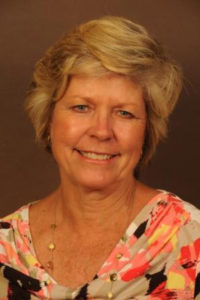
By Maria Lorensen, Development Director
On this beautiful warm sunny day, I watch a little towheaded girl in a blue top and pink shorts outside my window. She first runs, and then skips along the lawn of our inpatient facility. She’s about 7 or 8 years old, probably here after being picked up from school. She routinely stops under each tree to wait for her mother to catch up to her.
Several days earlier, I also watched as she joyfully played with a puppy outside the facility — the puppy was getting to spend a little time with its owner, a patient. It was hard to tell who was having more fun — the little girl or the puppy! As I watched, both the little girl, and the little dog jumped up and down in tandem.
Mom and the little girl circle from the front of the building to the back, where mom stops to take a picture of her rambunctious daughter in front a very large late-blooming red hibiscus. Mother and daughter stop along the bank of the pond that sits outside the inpatient unit. The pond, a home for many geese and even a few ducks over the years, is currently being drained. This seems to intrigue the girl.
She stops, points, and looks as if she’s asking mom a question. In a minute, the two of them take each other’s hands and walk off one of the back porches into the building. They slip into grandma’s room, where the TV is on. They settle in to visit for a while, hold grandma’s hand, and simply be there with her.
This scene has been replicated hundreds of times since Hospice’s inpatient facility opened in March 2014. Moms and daughters, husbands and wives, granddaughters and sisters-in-law, friends and ministers come to visit their loved ones, to share memories, to witness weddings, graduations and baptisms, to be part of this sacred circle of life.
Just this last week, I was approached by a friend whose mother recently passed away under hospice care. She had been in hospice care for about three weeks.
“I just had no idea (about the level of support),” he said. “You just don’t know understand, until you are right there in the middle of it.”
Many family members of our patients share this reaction — that they had no idea what kind of support and education that they, as sons and daughters, granddaughters and brothers, sisters and longtime friends, get when their loved one enters hospice care.
Another woman, who I’ve known for decades, shared the sentiment. She told me how many weeks before her friend died, she told her friend’s family (and her friend) that the woman really needed hospice care. She was in the late stages of cancer. The family was very reluctant, however. The patient spent less than 24 hours in our inpatient facility.
And what we have found, in this first half of 2019, is that 36% of our patients (183 individuals from Berkeley, Jefferson, Morgan and Hampshire counties) were in our program for less than 10 days. We lament this because we know that we could give these patients so much more care — from nurses and personal care aides, from chaplains and social workers, from volunteers, if family members or patients had only called sooner. And of course, we could give the husbands and wives, sons and daughters, granddaughters and brothers, so much more support for longer periods of time.
So why don’t patients and family members call sooner? Because hospice remains, in many people’s minds, a death sentence. I often tell the story of a home health nurse who I’ve known for decades. Her father talks about how many of his friends enter hospice care and then die in about three days.
“But Dad,” she has said to him on more than one occasion, “If they had called sooner, they wouldn’t have died in three days.”
The fear that the nurse’s dad has becomes a self-fulfilling prophesy.
Many family members, when asked about their Hospice experience, often say they wish they had called sooner. Patients don’t have to be in the program for only three days. We’d love to take care of them for three weeks, or three months — or longer.
And anyone can make that call — just to get information, just to find out what services Hospice of the Panhandle has to offer. Perhaps you’ve seen one of our commercials that have been running on WDVM and cable channels. Or you’ve heard them local radio stations. The message, we hope, is clear.
Just call.
Maria Lorensen has been the development director at Hospice of the Panhandle for almost 11 years. Hospice is a not-for-profit agency that has cared for patients and families with life-limiting illnesses in Berkeley, Morgan, Hampshire and Jefferson counties since 1980. For more information on how hospice helps residents of the four-county area live more fully, call 304-264-0406, or visit on-line at www.hospiceotp.org.
